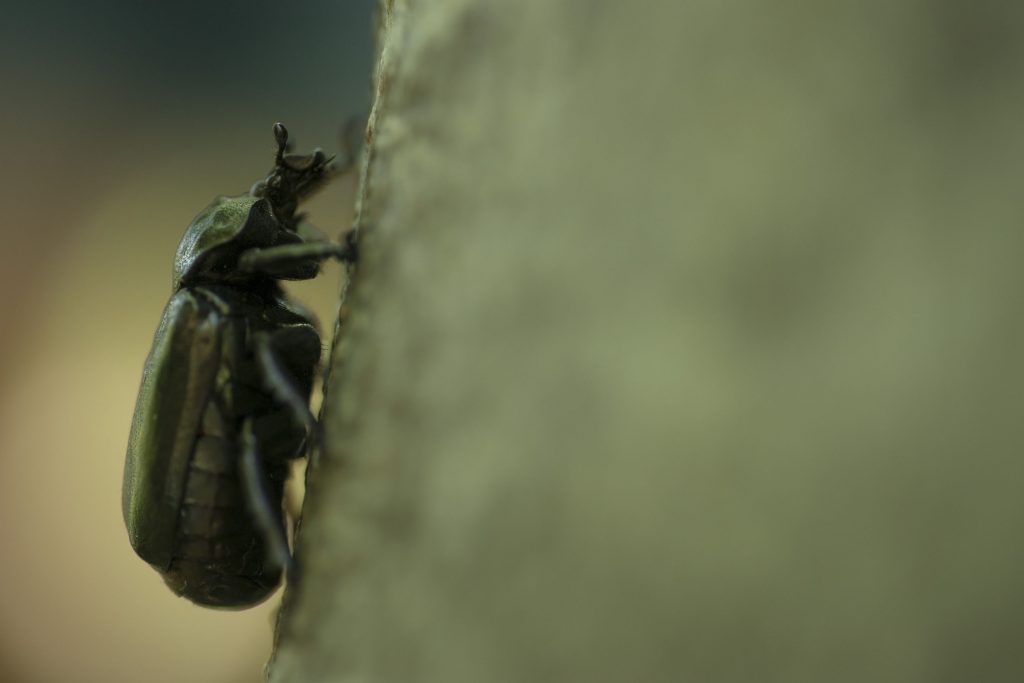The International Union for Conservation of Nature (IUCN) raises the alarm: “Almost a fifth (18%) of European wood depending (saproxylic) beetles assessed so far are at risk of extinction due to ongoing decline in large veteran trees across Europe”.
Many of these unseen species are extremely rare today as a result of the management of Europe’s forests, which lead to younger, often planted and monotonous forests. The whole natural life cycle of European beech forests lasts more than 500 years, but managed forests are normally cut at an age of 80 – 130 years. This leads to a lack of old veteran trees and dead wood. Old-growth and primeval forests have been almost completely extinct in the EU. Only in the Carpathians (especially in Romania), the Dinaric Alps, the Balkans, in the Bialowieza region (Poland) and in northern Scandinavia larger remnants of wild forests have survived.
According to IUCN, saproxylic beetles depend on dead and decaying wood for at least part of their life cycle, and are involved in decomposition processes and the recycling of nutrients in natural ecosystems. “They also provide an important food source for birds and mammals, and some species are even involved in pollination,” it is explained in the report.
The new European Red List of Saproxylic Beetles by the International Union for Conservation of Nature (IUCN) assesses the conservation status of almost 700 species of saproxylic beetles. 80 European experts across Europe contributed to the project.
“Some beetle species require old trees that need hundreds of years to grow, so conservation efforts need to focus on long-term strategies to protect old trees across different landscapes in Europe, to ensure that the vital ecosystem services provided by these beetles continue,” Jane Smart, Director, IUCN Global Species Programme, says.
Here you can read the full IUCN press release.
However the reality in Europe today looks differently: Increasing demand for wood as raw material and as energy source increases the pressure also on highly valuable old-growth and primeval forest remains. The situation is particularly bad in Romania, where “virgin” and old-growth forests are being logged at a frightening pace, in front of the eyes of authorities and the Government. Read more about the situation in Romania: Facts about forest destruction.
The forest destruction in the Carpathians, in particular in Romania, has been raising concerns by both NGOs and scientists. Nature conservation foundation EuroNatur and the Romanian NGO AgentGreen call on the Romanian Government to take immediate action to enforce existing law and to halt devastation of national parks and EU Natura 2000 sites.
Gabriel Schwaderer, CEO of EuroNatur, reacted shocked to recent reports about logging of old-growth forests in Romanian national parks: “It’s absolutely unacceptable that Europe’s last big primeval forests in Romania are being wiped out by state institutions. The incompetence of state-employed national park forest officials is unbearable: Old-growth forests with deadwood are not ‘sick’ and do not need chainsaws to ‘get light’.”
Gabriel Schwaderer calls on the European Commission to intervene, like in the case of Białowieża primeval forest in Poland. “In Romania, we are confronted with the worst nature conservation crisis in present-day Europe. If Europe continues to just stand aside and look, these forests will be largely lost very soon.”
Sign the petition to prevent the planned and irreparable degradation of the paradise forests!


